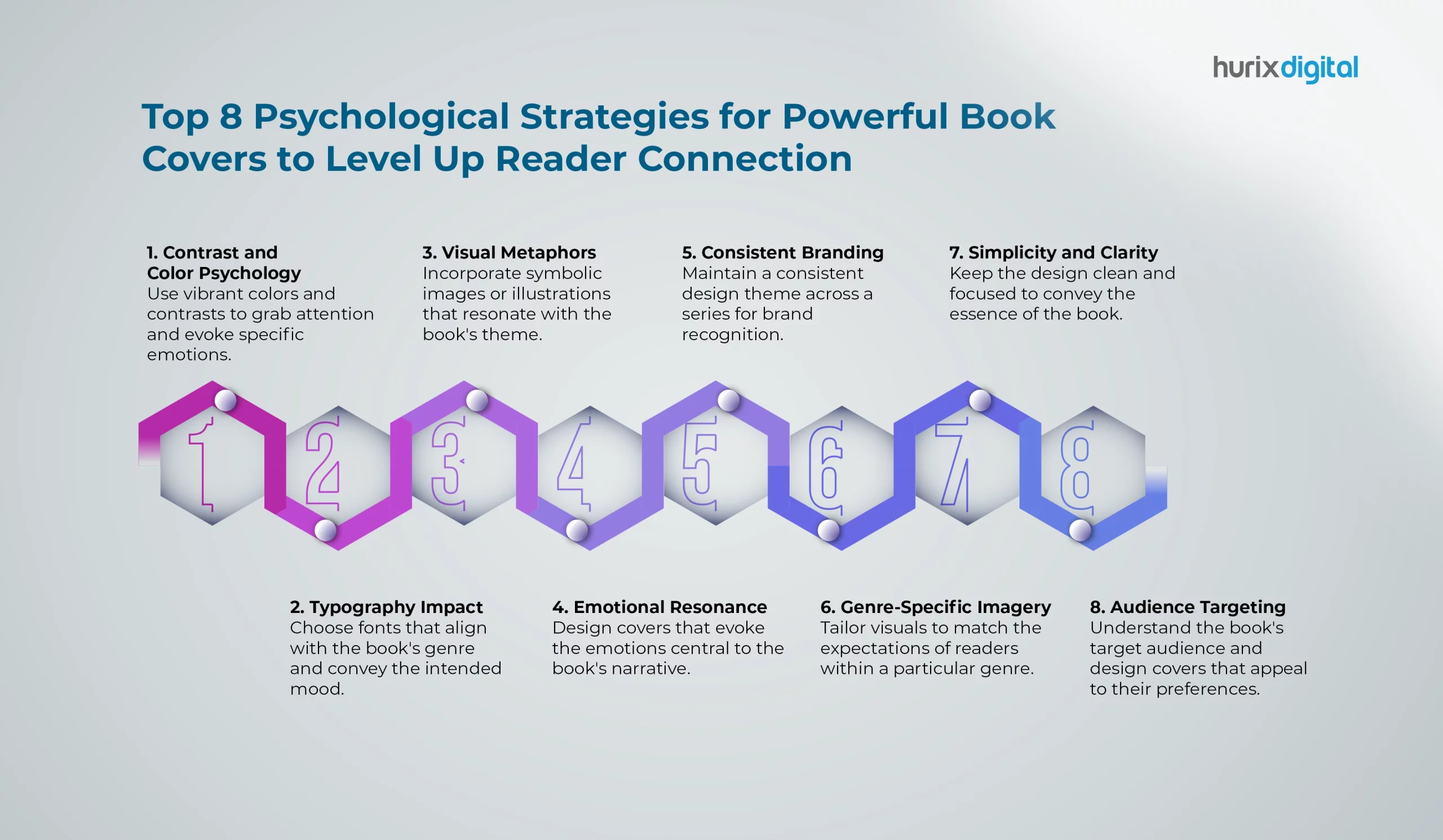Your book cover is the first impression for potential readers, whether self-published or with a traditional press. It must be compelling, using psychology to forge a connection and persuade. Discover the secrets of cover design with Hurix Digital’s top 8 techniques that bestselling covers use to captivate. Learn how to harness the power of faces and the pull of mystery to make your cover stand out.
Want a cover that leaps off shelves? Contact us to begin crafting your irresistible book cover today.

The Art of Designing Book Covers
Book covers are the first point of contact between a reader and a story. A well-designed cover can significantly influence purchasing decisions and foster connections with readers. Understanding the psychological strategies behind effective book cover design is essential for both authors and publishers.
The Importance of Color
Color plays a significant role in how readers perceive a book. Different colors evoke various emotions and draw attention to key elements. For instance:
- Red signifies passion or excitement.
- Blue conveys calmness or trust.
- Yellow represents optimism and energy.
Contrasting colors make essential elements stand out, ensuring the title and imagery capture immediate interest.
Typography Choices
Font selection greatly impacts a book cover’s effect. The right typography reflects the genre and sets the narrative tone. For example:
- Serif fonts are associated with traditional or classic literature.
- Sans-serif fonts feel modern and clean, suitable for contemporary works.
Choosing fonts that align with the book’s theme helps convey its essence, enhancing reader connection.
Visual Elements
Incorporating visual metaphors can deepen the reader’s understanding of the book’s content. Symbolic images resonate with the overarching message, drawing readers in. Moreover, genre-specific imagery helps meet audience expectations, making it easier for readers to identify their preferred style.
Simplicity in Design
A clean, focused design is vital for effective communication. Excessive elements can overwhelm potential readers. Simplicity ensures the cover conveys the book’s core message without distractions.
Targeting the Audience
Understanding the target audience is crucial. Tailoring designs to specific preferences enhances engagement. Researching demographic trends and reader interests informs design choices that resonate with specific groups.
Conclusion
In summary, creating a compelling book cover involves a blend of color psychology, typography, visual storytelling, and audience awareness. By applying these strategies, authors and publishers can craft covers that attract attention and foster meaningful reader connections, ultimately leading to increased sales and readership growth.




